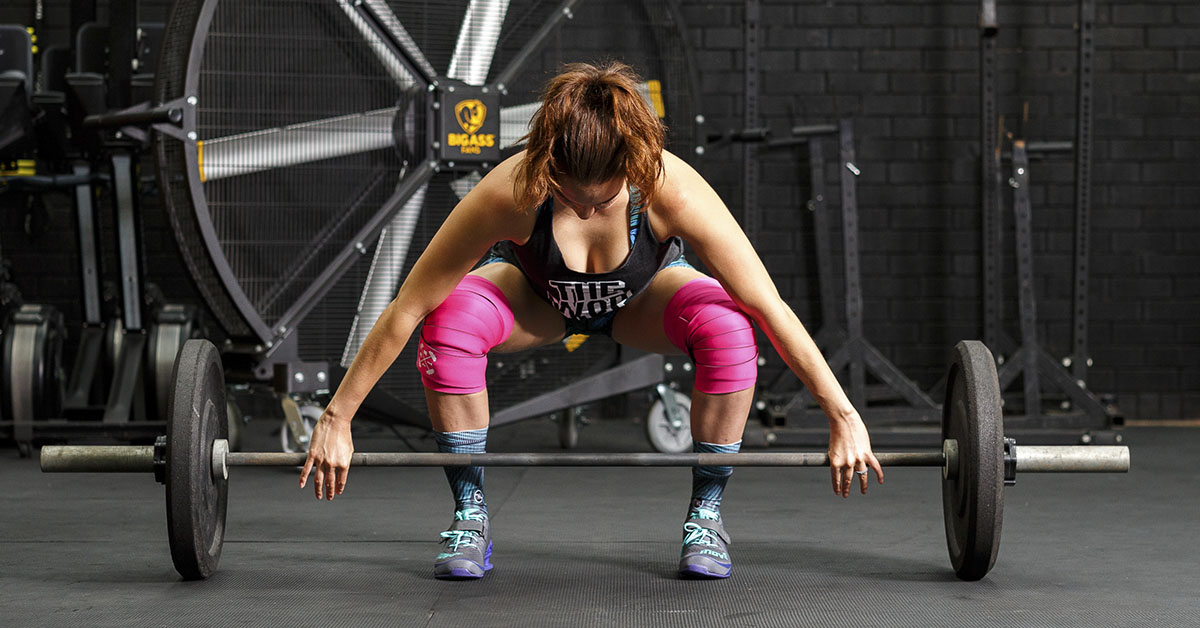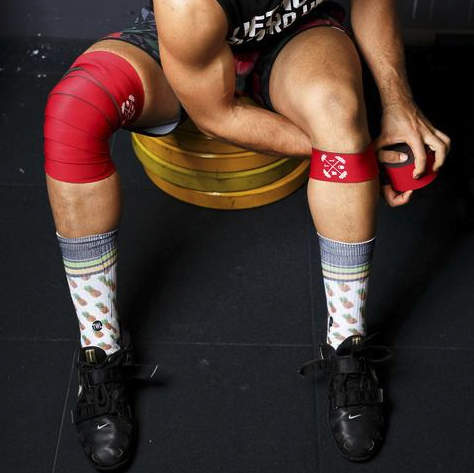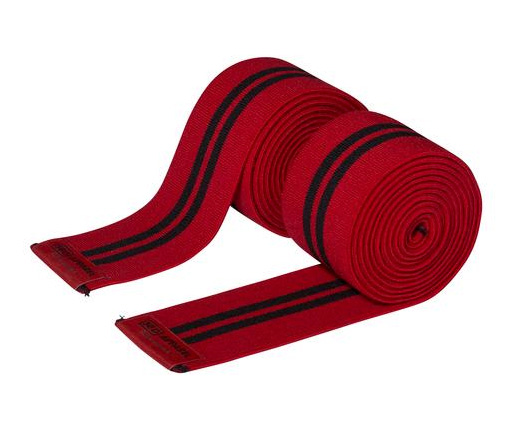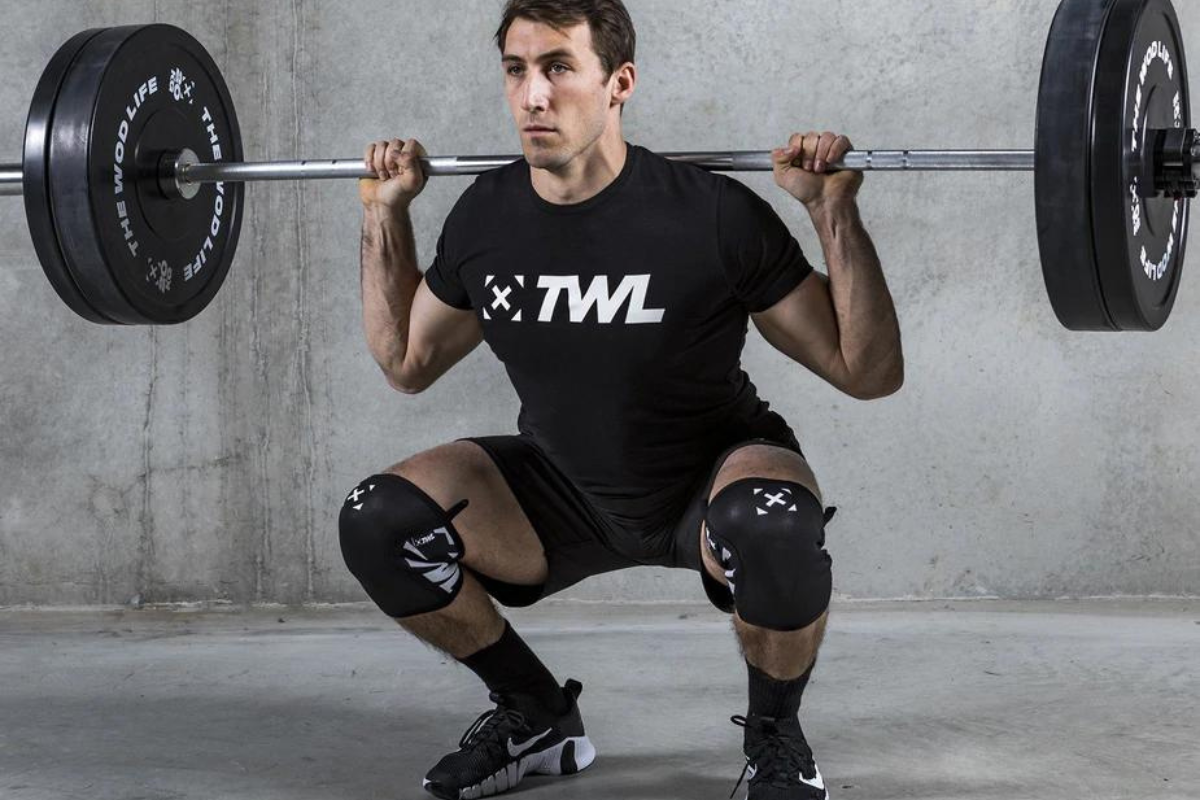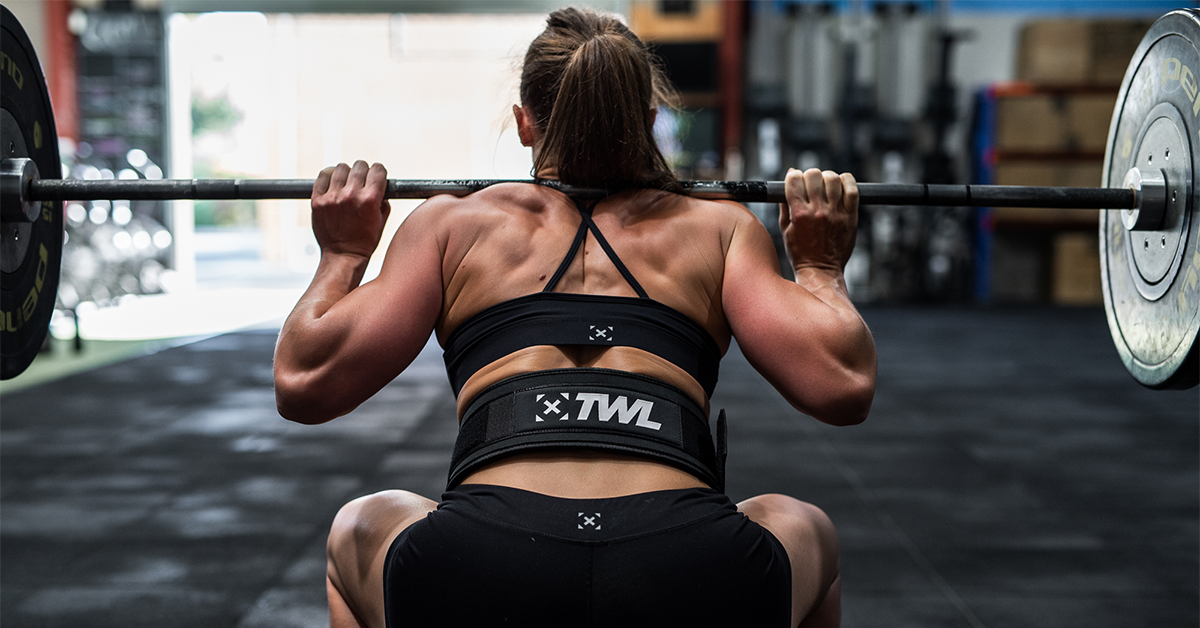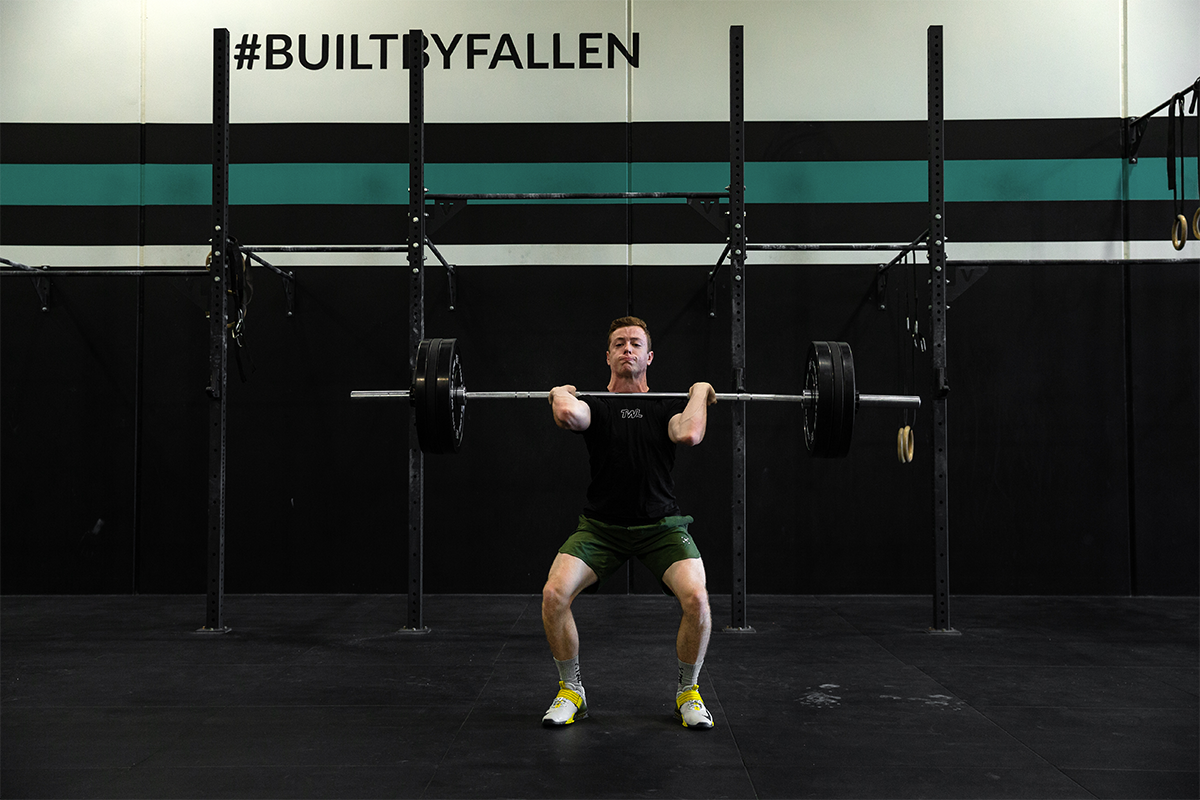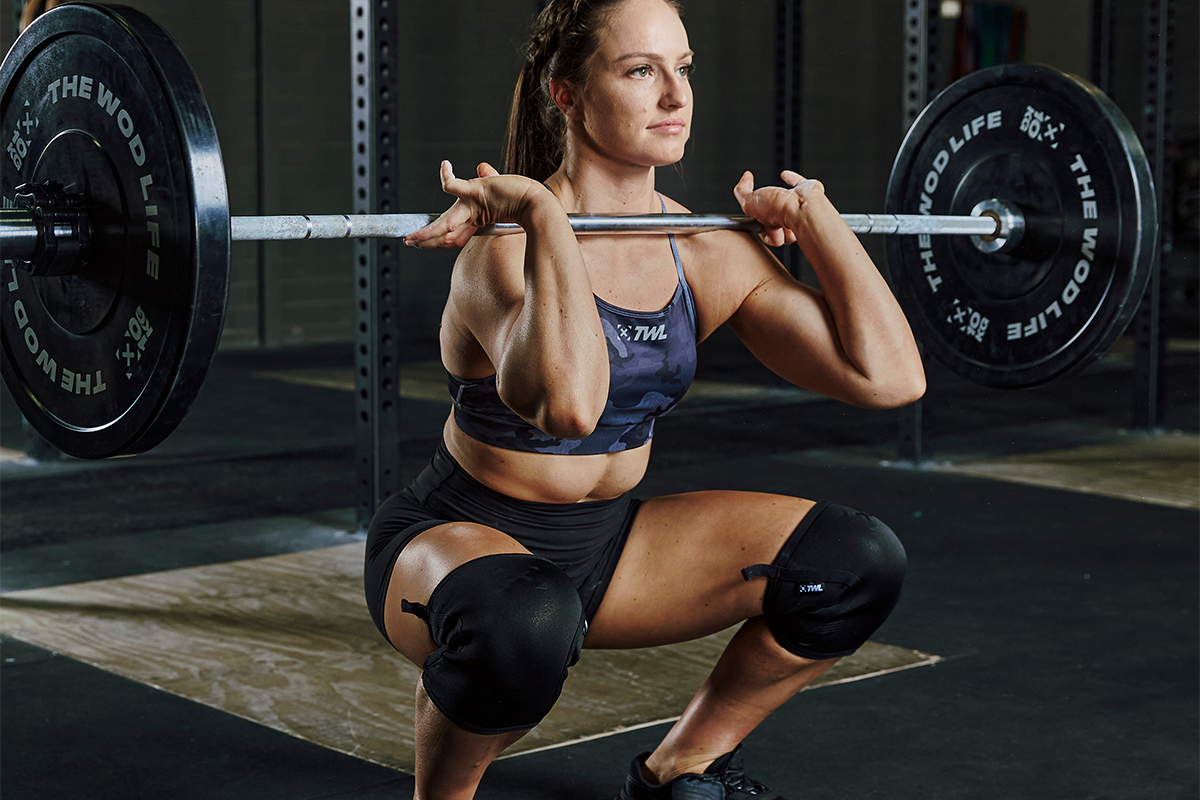When it comes to fitness, there’s not much athletes won’t try in the name of improved performance — say, for example, collagen protein, high-tech heart rate monitors, and electrical nerve stimulation. Think of one of the most common accessories that even not-so-serious weightlifters are investing in — knee wraps and knee sleeves.
You are familiar with knee wraps and knee sleeves, but you may not understand why they are such a big thing or what they are good for in the first place. Like any athletic trend, both hit the market with claims they would make you work out better, recover faster, and look and feel “cool” during your workout. Look around the weight room or the box and you will notice half of the people are sporting high-tech knee sleeves and some are even sporting knee wraps.
So how did these knee accessories get so hot? How are they different from each other? What do they do your plain, good ole’ regular kneed can’t do?
Let’s break it down.
Knee Sleeves Versus Knee Wraps
Knee Sleeves
For knee sleeves (which you slip on), the quick explanation is they compress. Typically made of neoprene material, knee sleeves “work” by constricting the joints, which helps to stabilize them, thus protecting the joints from future damage. The compression helps keep the knee joints warm. Certified strength and conditioning specialist Brandon Beatty, C.S.C.S., F.M.S., said knee sleeves might help with injury prevention. In addition, compression increases blood flow, speeding up recovery by delivering to the knees the nutrients they need for repair after an intense workout. If you recover quickly, then you may perform better on a day-to-day basis.
Knee sleeves also help in the mechanics of a given movement by limiting patellar movement and providing lateral stability. According to one study, knee sleeves can increase proprioception, which is the sense of the relative position of the neighboring parts of the body. “Proprioception is basically telling you to be aware of where your body boundaries are. But in training, what really matters is what you do with that,” said Paul Ochoa, P.T., D.P.T., O.C.S., C.M.P.T., L.M.T., owner of F Squared Physical Therapy.
Let’s be clear. Knee sleeves are not knee braces. They cannot protect a knee with a previous injury from further ailment. They simply offer a degree of joint protection by increasing the stability of the knees.
The biggest disadvantage is knee sleeves are small and people mistakenly assume wearing knee sleeves will automatically improve their technique and make them better, stronger lifters and squatters. This is not true. “Even if you are using knee sleeves, you still need to work on your mobility, work on squat form, and take care of your joints the best as you can,” said physical therapist Grayson Wickham, D.P.T., C.S.C.S., founder of the mobility company Movement Vault.
Does every athlete need to use knee sleeves? “Likely not,” said Ochoa. “But they can be beneficial under the right circumstances.”
Knee Wraps
The use of knee wraps started with the big guys. We are talking about big-name powerlifters who, in competition, sheath their knees in knee wraps for stability during The Most Important Squat of the Year. But now, average Joes are sporting them in functional fitness class and powerlifters are wearing them, too.
Knee wraps are typically made out of the material you find in wrist wraps. Check out these SBD knee wraps so you have an idea of what they look like. “Unlike the knee sleeves that you can just slip into, knee wraps require some knowledge to put on. Basically, you wrap it around the knee in a spiral or diagonal method for use in squats,” said Wickham.
Why are knee wraps so highly valued by powerlifters? The reason is they allow more weight to be lifted in the squat. “During the eccentric (or downward) phase of the squat, the tightness of the wraps increases, allowing a high amount of elastic energy to be stored, which is then released during the concentric (or upward) phase, resulting in heavier and faster squats,” Beatty explained.
Just because they help you move weight doesn’t mean they help you get stronger. In fact, in some cases, knee wraps may actually limit you. One study published in The Journal of Strength and Conditioning Research found squatting in knee wraps actually leads to almost 20% decline in quad muscle activation. “That is because the wraps essentially ‘take over’, doing the job of your quads,” said Wickham.
How about that decrease in muscle activation? Knee wraps actually make your workout less effective from a calorie burn, muscle growth, and fat loss standpoint. Not to mention wearing wraps all the time could actually cause you to lose some stability in your knee.
A second study published in the same journal examined the impact of wearing knee wraps on mechanical output and performance characteristics of the back squat. In the study, 10 men with resistance training experience performed six single back squats at 80% of their one rep max. What is the catch? They did three reps wearing knee wraps and three reps without wearing them.
The researchers found wearing knee wraps provided 39% reduction in horizontal barbell displacement. “When you squat, the barbell does not solely travel up and down (or vertically). It also moves backward and forward (horizontally). You want to have a low horizontal barbell displacement when squatting to increase efficiency,” said Beatty. Therefore, the decrease in horizontal movement suggests knee wraps help increase the efficiency and movement pattern of the lift.
From their findings, the researchers concluded the reduction in horizontal movement actually altered the technique of the lifters, changing the muscles targeted by the exercise. “The wraps force you into a more specific movement pattern. While that movement pattern may be okay for some people, it may not be good for some bodies to be forced into a position while under tension,” Beatty added.
Both Beatty and the researchers suggested although the wraps may help, it is important to make sure the accessories do not negatively alter or compromise the way your body moves.
The study also found when the lifters performed the eccentric portion of the lift while wearing knee wraps, they performed it 45% faster compared to when they were wearing no knee wraps (due to the storage and use of elastic energy in the knee wrap, as explained above).
How do you know, then, if YOU should wear knee wraps when you train? “You probably shouldn’t unless you’re a powerlifter preparing for a competition or you are really trying to hit a one rep max,” said Wickham. “There are two main reasons to use wraps: if you are going for a one rep max or if you are a powerlifter. Other than that, knee wraps don’t have too much real-world application for the average exerciser, and you better stick to knee sleeves if you want a knee accessory,” he said.
The bottom line: ultimately, the type of knee accessories you choose to wear (if any) should depend on your particular fitness and health goals, and each comes with its own advantages and disadvantages.

